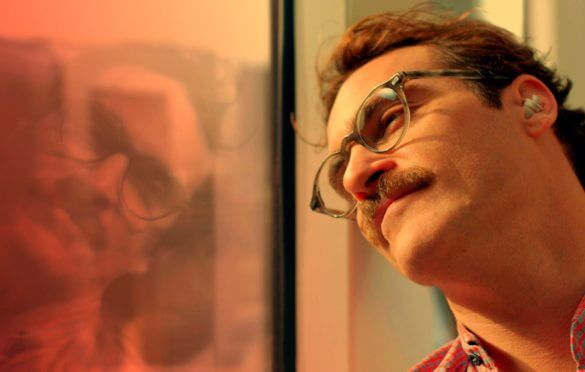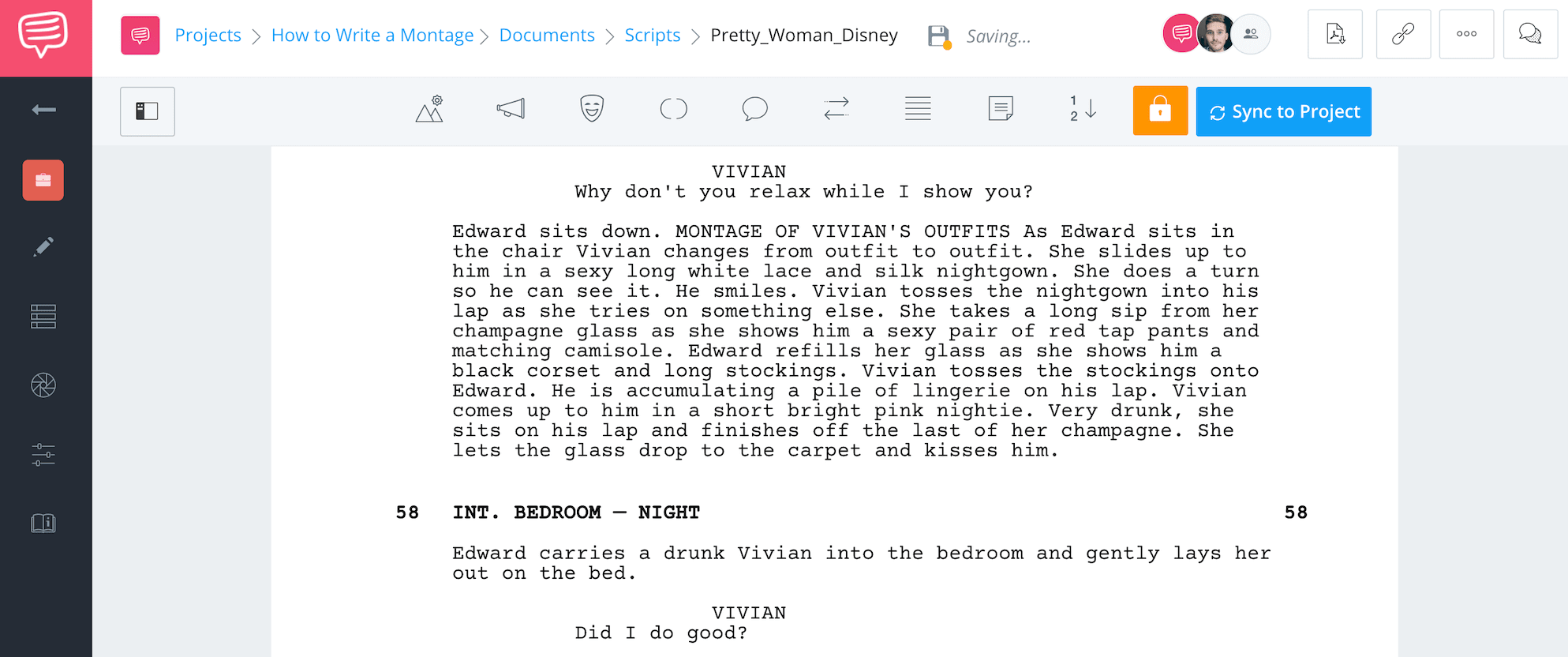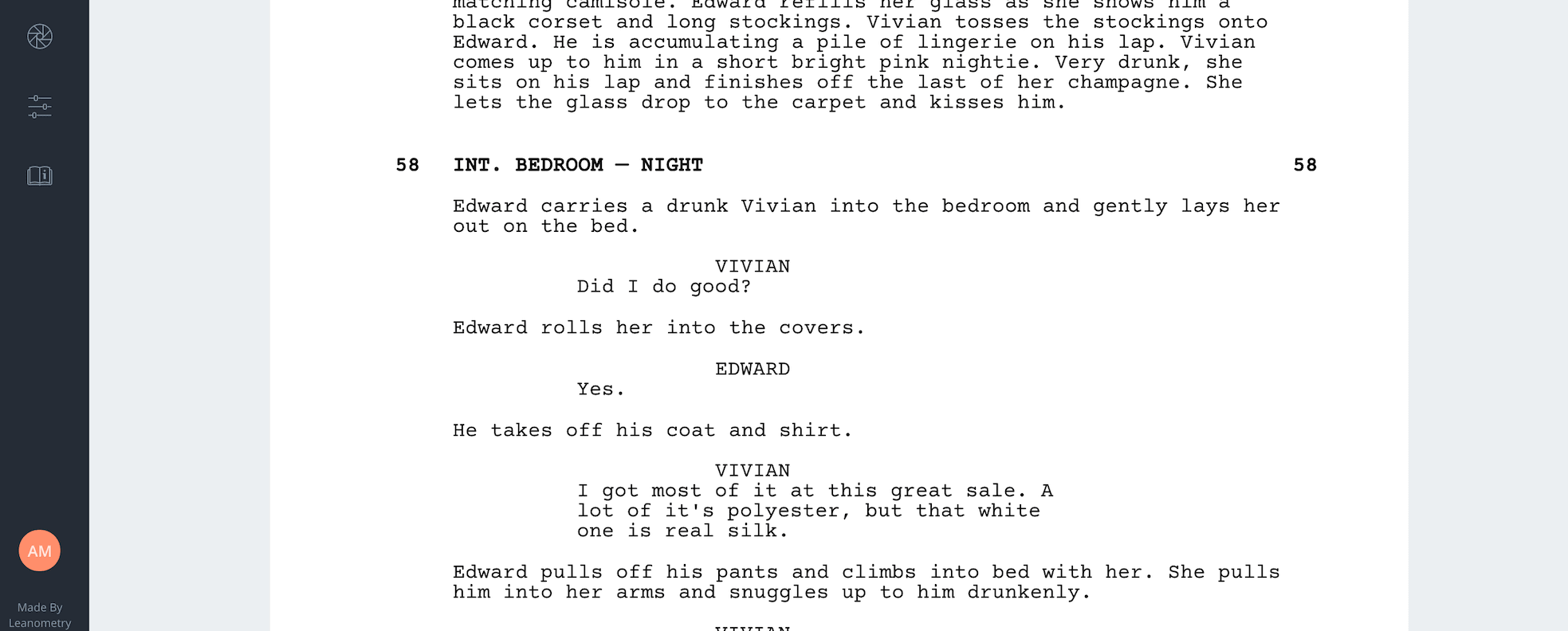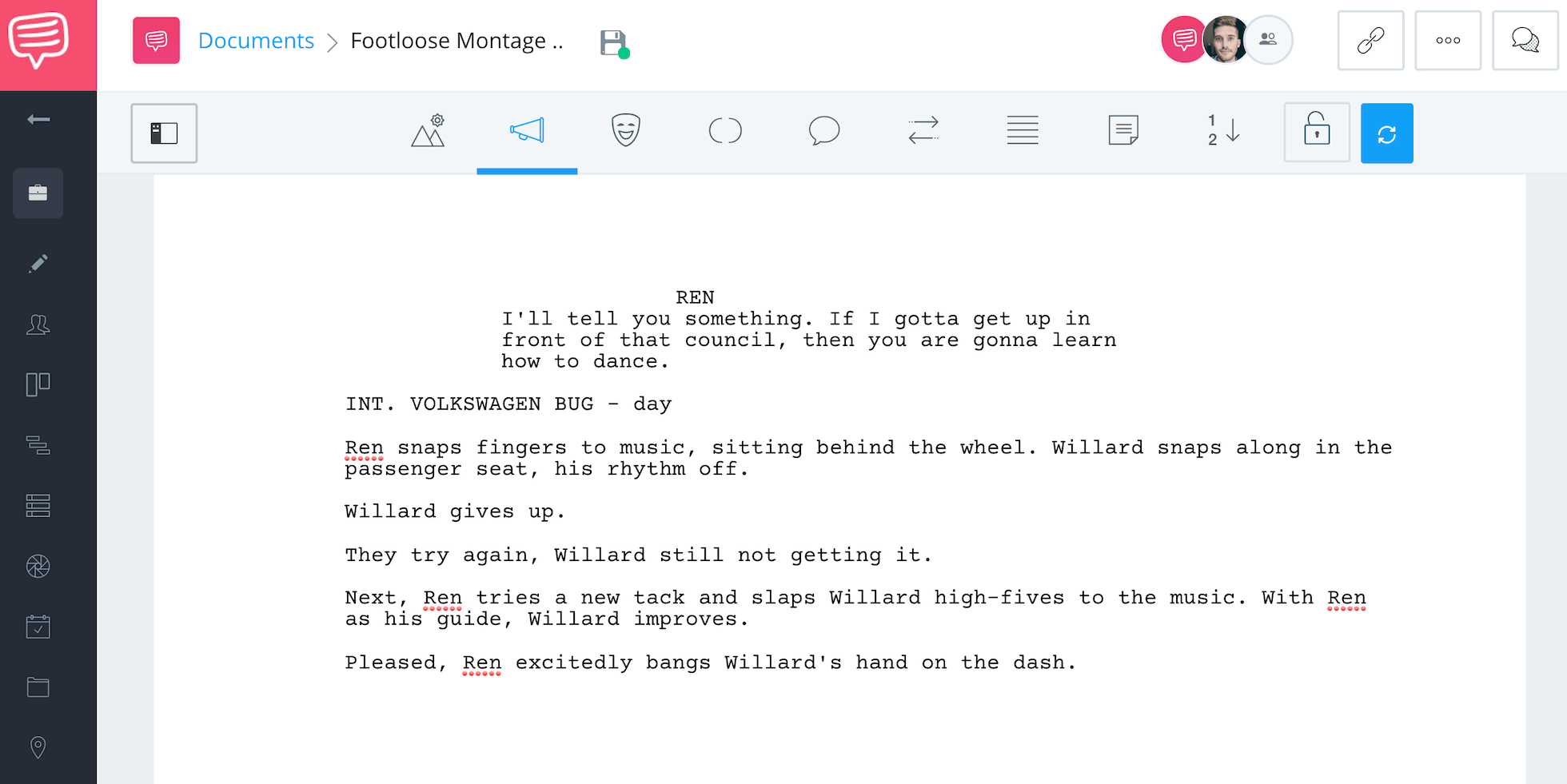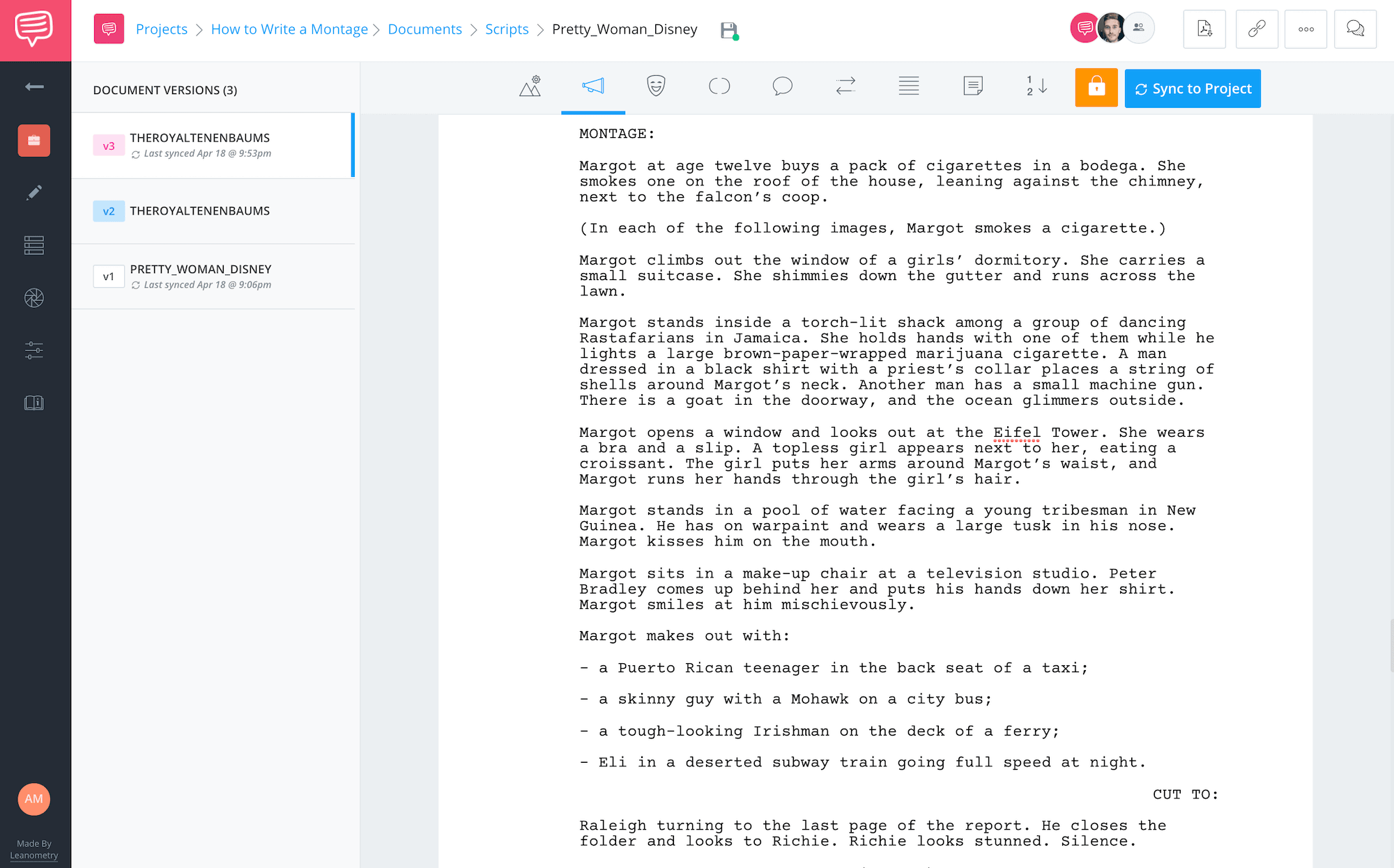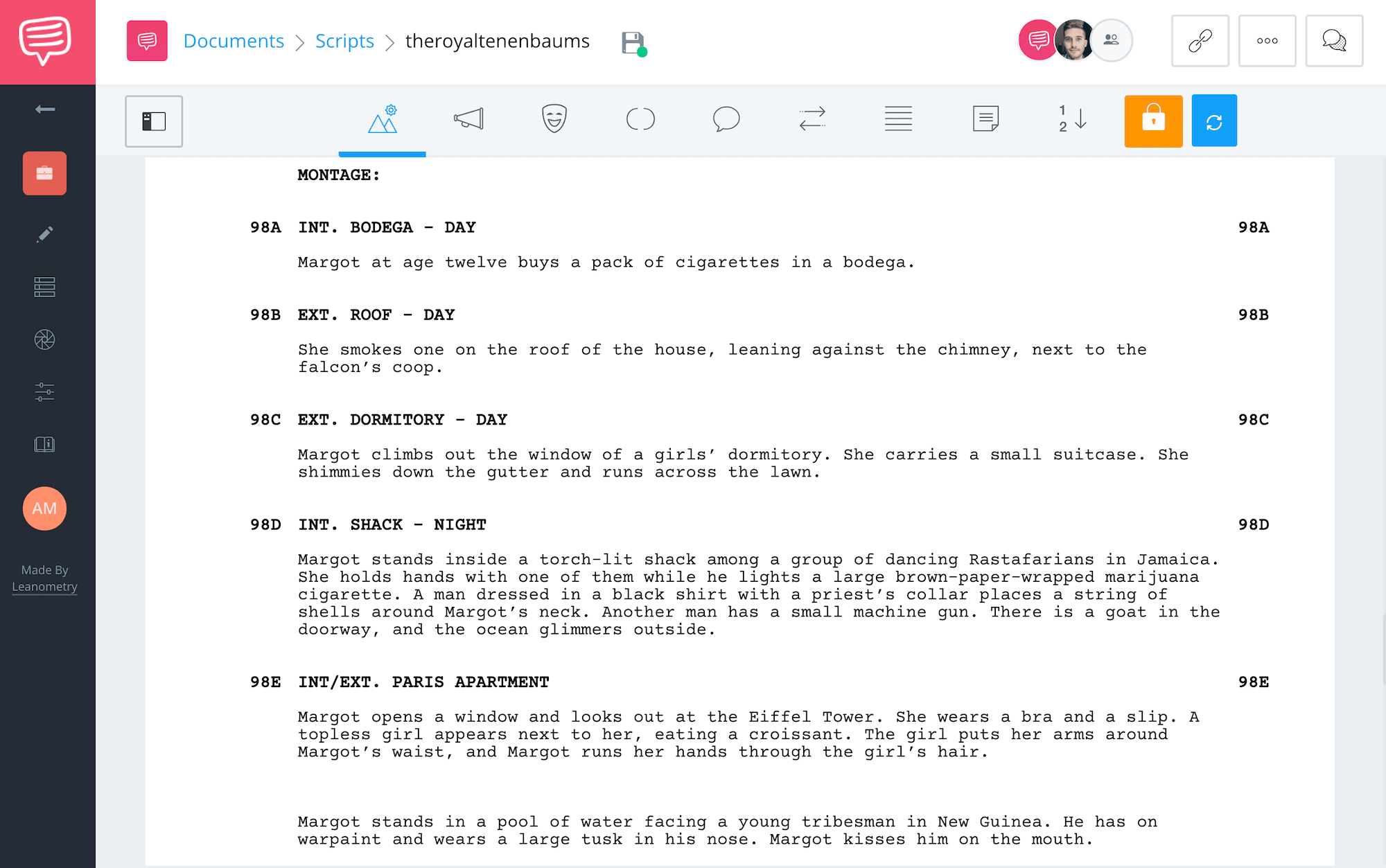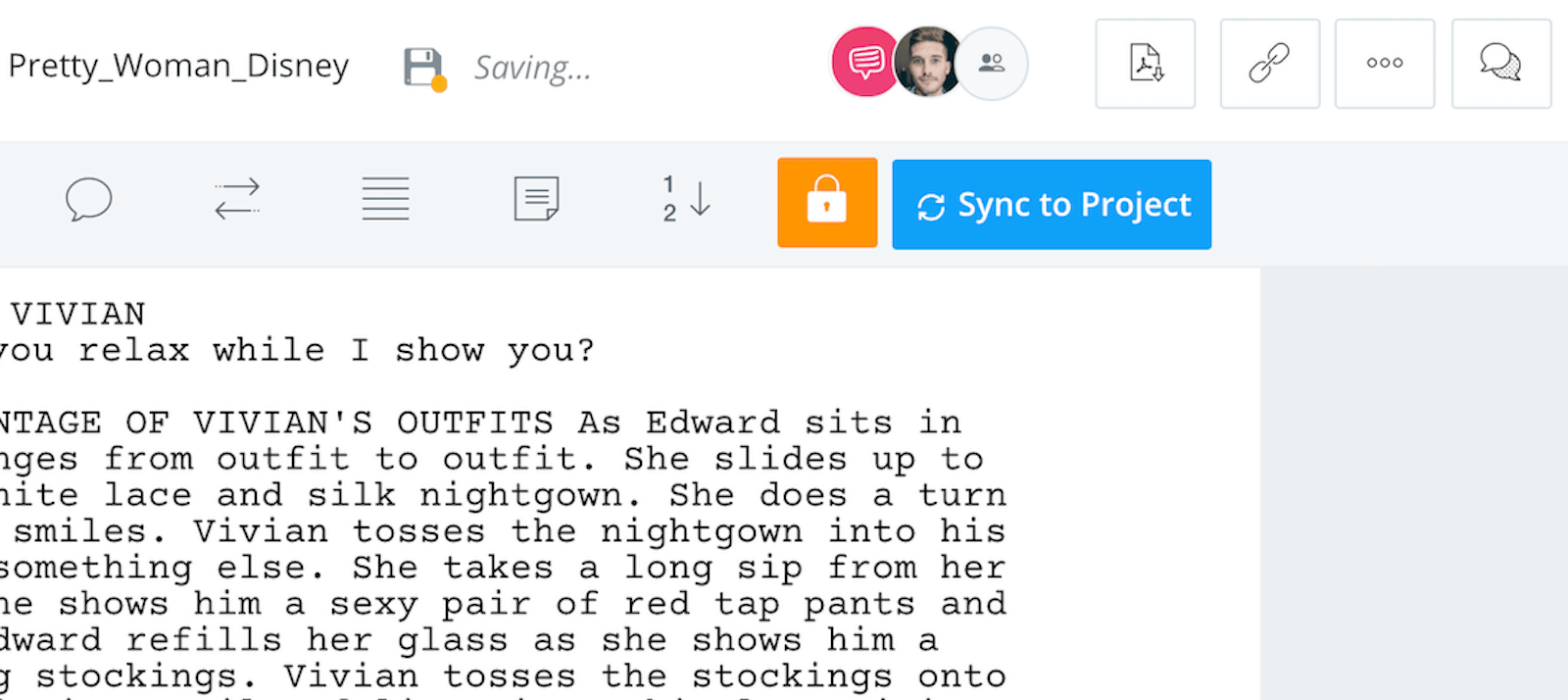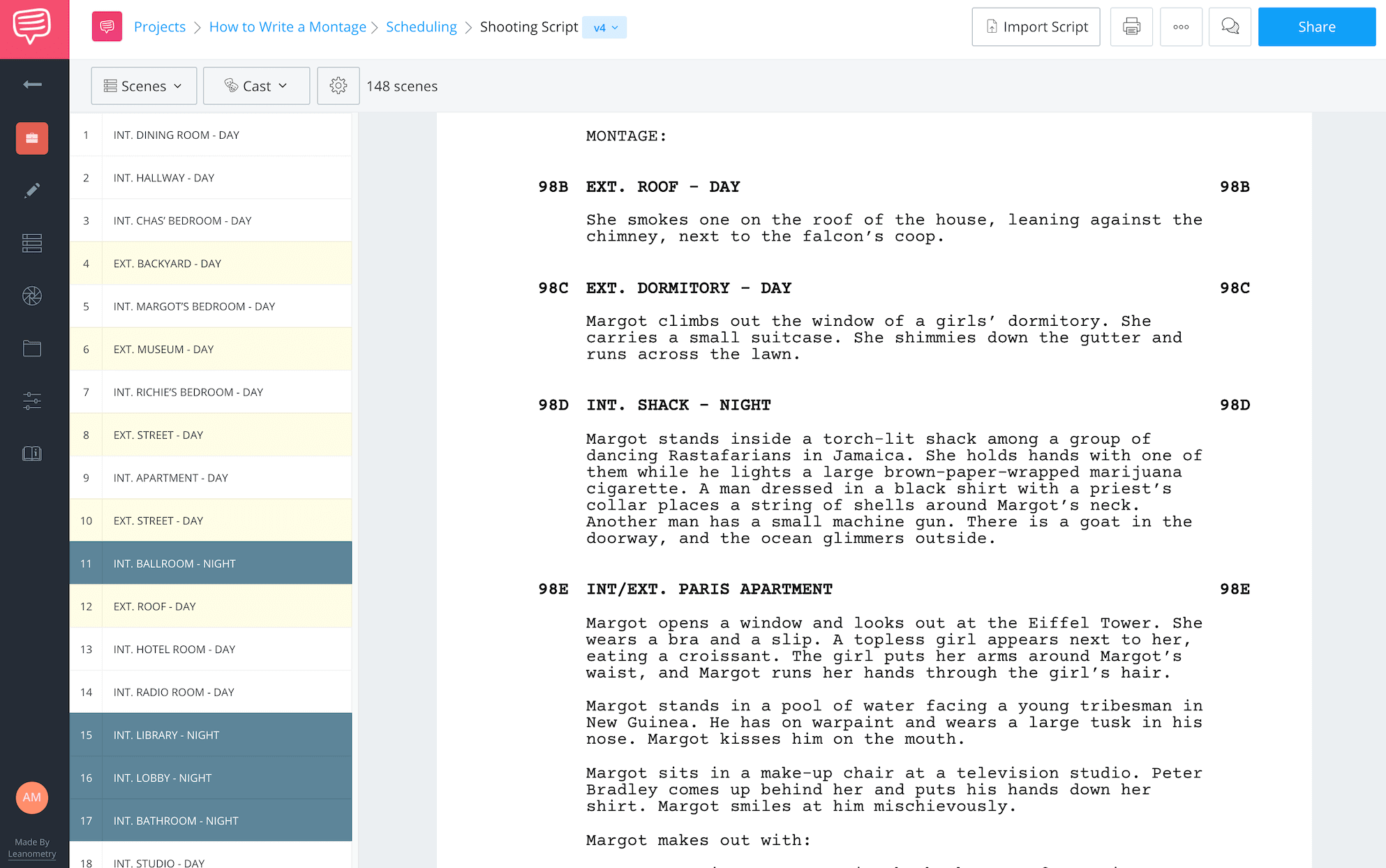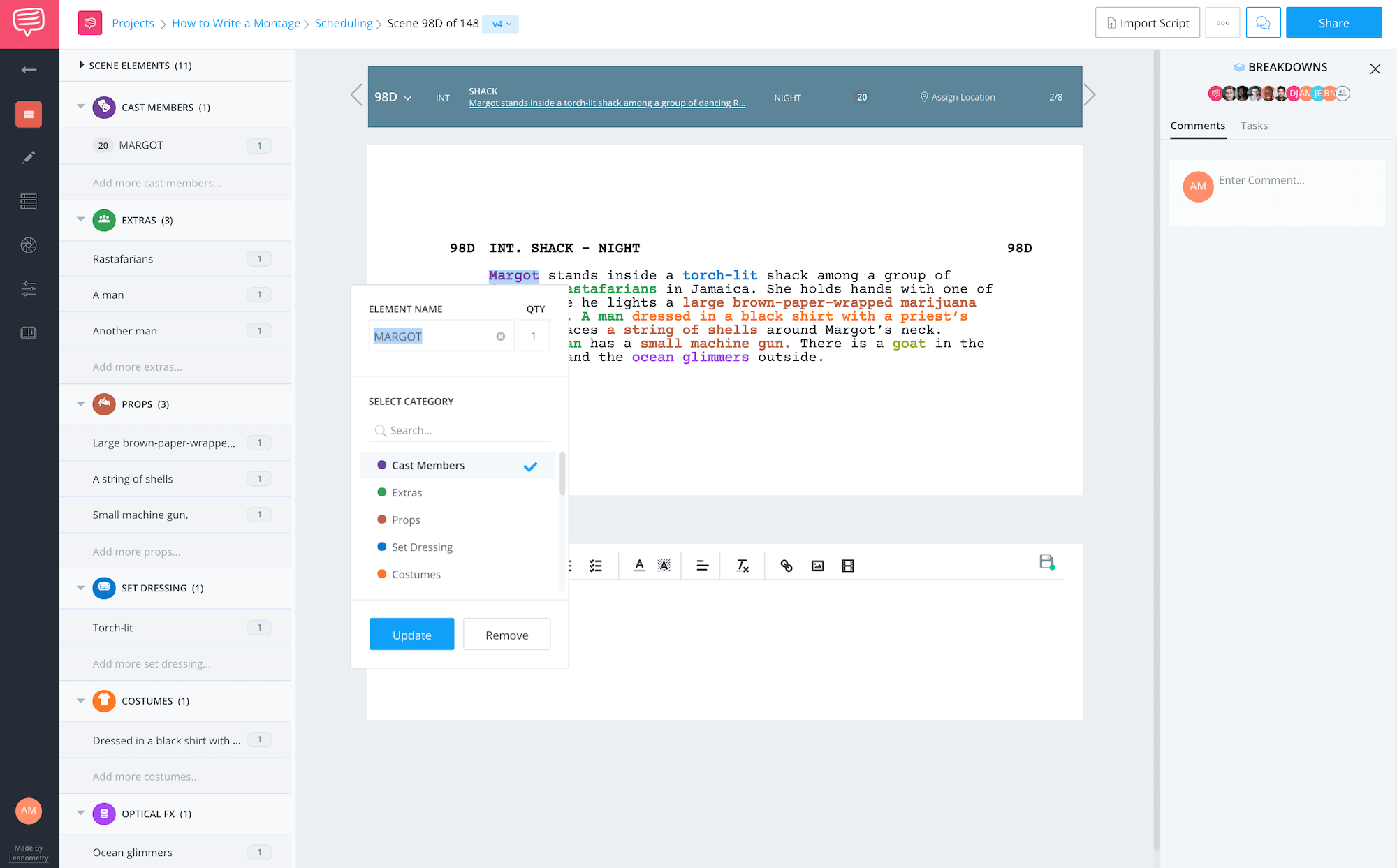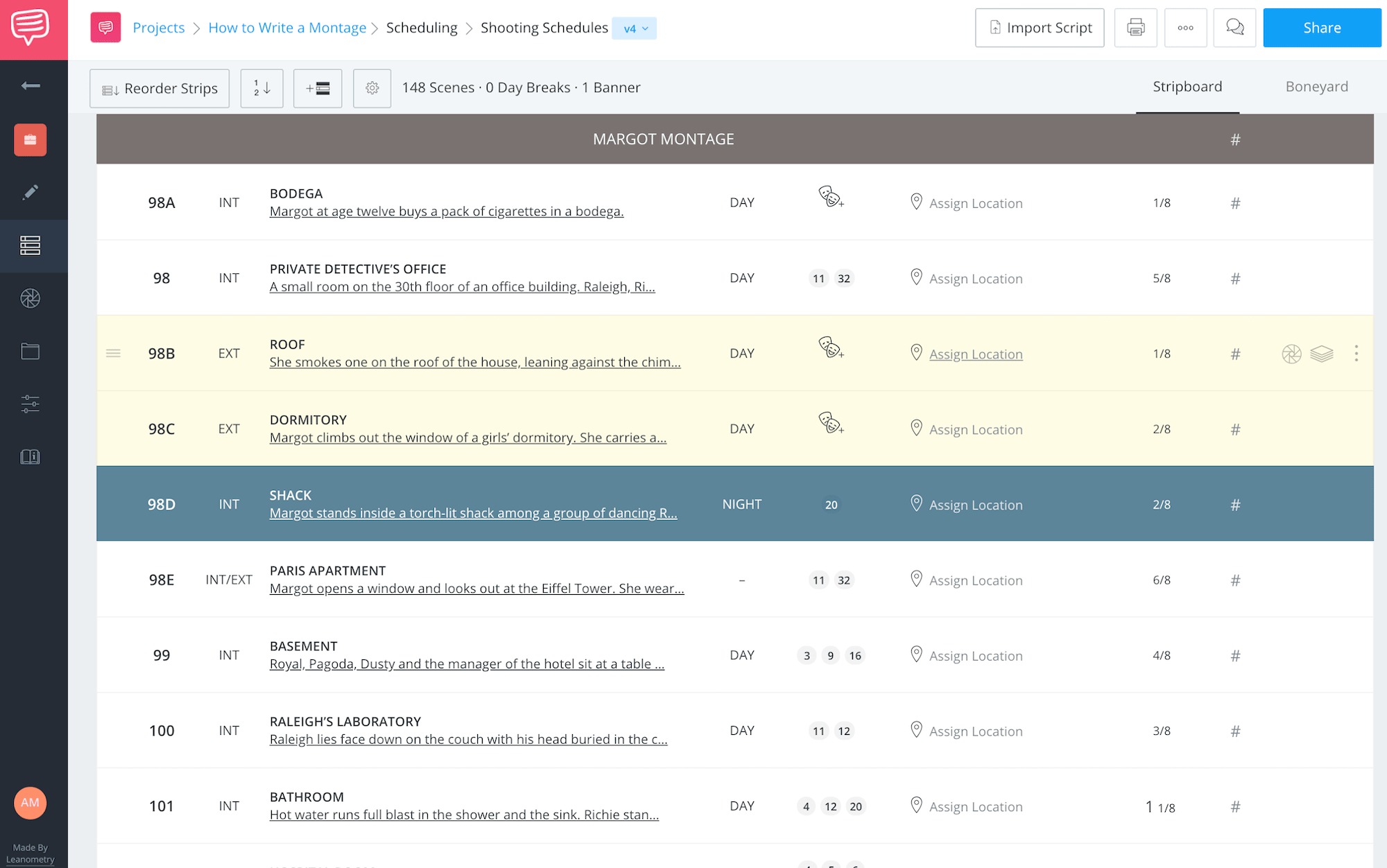You’ve got a great idea for a montage. But what does it look like on the page? Figuring out how to write a montage in a script the “right” way is a common concern.
There isn’t one definitive way to write a montage. You have plenty of industry-standard options. We’ll cover all of them in this post, along with a more efficient way: how to write your montage with an eye towards production so that your montage gets scheduled, budgeted and shot.
FORMATTING YOUR MONTAGE
Formatting can save your vision
Crafting a montage isn’t the most natural part of screenwriting. There’s a lot that goes into it.
There’s also a lot that goes into shooting a montage.
As a writer, you don't often have to think about that. You hand off the script and hope for the best. But sometimes, that part of the process is the scariest of all — the thought that someone, other than you, may completely change the story and ruin your vision.
This section briefly discusses how to avoid that by writing your montage with an eye towards production.
If you're here to learn how to write a montage in a script, chances are you probably already know what a montage is. But as a refresher, let's quickly define it before moving on.
MONTAGE DEFINITION
What is a montage?
A montage is a collection or series of images, still or moving, that are assembled to produce a sequence.
A montage is most commonly used to show the passage of time, tell a larger story than the sum of the images it presents, and to compare and contrast. Soviet-era film theorists and auteurs, like Sergei Eisenstein, first mastered it and we've been using them ever since.
What can a montage do?
- Compression of time
- Comedic delivery
- Intertwine story lines
- Gestalt (pieces put together to make a greater whole)
Now that we got that out of the way, let's jump in.
So, you’re about to start writing your montage. You’ve never written one before, or maybe you’re just unclear about the best way to present it on the page.
You’re wondering:
How much detail do I use? Where do I put scene headers? Am I supposed to write down when a montage starts...and ends? Or will the reader be able to tell?
As a writer, the scope of your role is to engage an audience with your spellbinding worlds and captivating characters...on the page. The role of producer or first assistant director is to bring those worlds to screen.
But what if you took on that responsibility? What if you chose to format your montage with the production in mind right from the beginning? And the next montage you write easily translates to screen before the producer or first AD does anything at all.
Well, first off, they will LOVE you. But I get it. This probably isn't your main priority. Your writing must serve the story. Not cater to the producer.
And you're right.
Mostly.
It depends how badly you want to see your montage on screen. The more details you write down now, the fewer changes they make later.If we don’t give enough details to the producer, your original montage might get lost in translation.
Or worse…
If a producer doesn't have enough clarity, they might choose to cut the montage completely. So if you want to preserve your vision, focus on the formatting. Formatting your montage scenes with great detail leaves little to no room for interpretation.
In StudioBinderʼs Screenwriting Software, we will learn how to detail each new location as a separate scene heading. We will also add descriptions to the scene.
I know. Screenplays aren’t novels. We won’t add too much description. But adding enough information on cast, locations, and props, will make shooting and scheduling the montage that much easier. Not to mention, keep your vision and integrity intact.
Be clear with where the starting point is. Be clear where the montage ends. How can you do this creatively and with clarity for the reader?
Because of the nature of the montage – its quick and deliberate shots - it is common to see location changes. We will need to know how to format for these changes to bring the most clarity to our producer.
Again, we want him or her to want to shoot the montage, the way we write it. And so, formatting is critical.
FORMATTING THE MONTAGE
1. How to write a montage for one location
Let's start with the most straightforward type.
If you’re jamming along in a scene and you want to dive into a montage without moving to a new location, it doesn’t get any easier.
Writing a montage that exists in one place doesn’t take much formatting. But it is helpful to slug MONTAGE right where it starts.
StudioBinderʼs Screenwriting Software allows you to either import a script and edit from there or write directly in the processor. So feel free to throw your writing in StudioBinder and follow along.
Let's use a one-location montage example from Pretty Woman. Notice the basic format of the montage from screenwriter, J.F. Lawton:
As written, action lines make up the montage. And even though it's a long paragraph, that’s okay here because all of the action takes place in the same location. And what's most important is that the reader has no trouble grasping what’s happening.
Feel free to read the entire scene, but just for some context:
We are in the living room, where the montage ramps up the characters’ emotions. And all of the details in the montage gives us that information. Formatting one location is effortless, but it still requires detail. Don't forget — the more you give, the less they change.
So, what do you do when the montage is over? It is sometimes helpful for the reader to write END MONTAGE. But with this example, you can move to the next scene heading without a problem.
You can see below how the screenwriter exits the montage:The montage of outfits begins in the living room and ends once they leave the living room. The new heading with the new location (the bedroom) makes it clear that the montage is over.
This new scene-heading acts as the ending to the montage. Many times though, new scene headings are within a montage. And other endings, aren’t so distinct.
More detailed formatting helps the producer to schedule the scene.
FORMATTING MONTAGE SEQUENCE
2. Writing a montage in a new location
This isn't as complicated as it sounds.
If your montage starts in a new location from the preceding scene, include MONTAGE in your new scene’s heading.
It's as simple as your typical scene transition, and as long as you label where it starts, the reader won't have an issue following.
In the following montage example from the original Footloose, the preceding scene takes place in a locker room.
Watch how it transitions to a montage in a Volkswagen:
Since we leave the locker room to start our montage sequence in a Volkswagen, we treat the car as the next location, and we include MONTAGE in its scene header. It's as simple as that.
Now for the more complicated formatting...
RELATED POSTS
FORMATTING MONTAGE SEQUENCE
3. Write a montage for multiple locations
When a montage takes place in many locations, writing with the production in mind is crucial. It could make or break whether or not it gets scheduled and shot.
And you don’t even need to know anything about how to schedule a montage to pull this off.
Tip: as soon as you realize there is more than one location within a single montage — alarm bells should be going off.
Each new location is a new scene. And each scene requires planning.
Think about it this in terms of what you put on the page. Hopefully, you’re taking creative liberties and giving a ton of interesting details. But all of those details on the page are what?
Which characters are in that scene? What props? Maybe you’ve even made wardrobe decisions?
You’re a writer. You’re smart.
You know these are all elements of a scene that cost time and money. They have to be pre-planned and scheduled.
So creating new locations as new scenes is one way to think ahead. And being as detailed as possible within those scenes is another.
Let's take an example. If we examine a multiple location montage from The Royal Tenenbaums, we can see a considerable difference between the scene layout on the page and what we see on screen.
Let’s watch how the montage plays out on screen:
From montage screenplay to montage screen.
Now let’s read it.
The scene begins in a private detective’s office. The detective has been gathering dirt on the life of Margot Tenenbaum. When clients peek at the dossier, we launch into the “Margot montage.” Like this:
This would be an absolute nightmare to schedule.
So why did the writers format it this way?
Wes Anderson and Owen Wilson write this montage with the reader in mind. It gets the point across, gives insight into the character of Margot, and makes it clear where the montage begins. At the end of the montage, the writers transition with CUT TO: and return to the detective’s office.
While this montage example works as an entertaining read, it’s a nightmare from a production standpoint. Because Wes Anderson is so involved in the films he writes, it may be a little different for him. He's not necessarily handing-off his script to anyone else.
(Though, even if you are producing your own film, breaking up the scene headings is still helpful).
But if you’re planning on handing this script off for someone else to produce, it’s best to make each scene as clear as possible.
I'll say it again – format each location with new scene headings.
StudioBinderʼs Screenwriting Software makes this incredibly easy to do.
If you break down each location in your montage as a new scene, the software will automatically create a new alphanumeric scene number for you, such as Scene 98A, 98B, 98C, etc.
If you’re working in StudioBinder and created new scene headings for each location in your montage, just press "sync" in the top right corner...
...these new headings will populate in the rest of the project.
Note the new and improved shooting script below:
This will be VERY helpful for your first AD and producer.
But now, what does that mean for you?
Well, for one thing, your vision will be more explicit. And clarity can translate your written montage beautifully to screen.
RELATED POSTS
Writing A MONTAGE
4. Formatting for the breakdown
Now that your first AD has the new scene numbers, they can break down each one of these “mini-scenes” in the script breakdown.
In a script breakdown, a first AD identifies the essential elements in the scene. They typically will start with who is in that scene, followed by props, wardrobe, set dressings, etc.
When a scene is detailed enough, breaking it down is a breeze.
Especially in StudioBinder.
Learn more about the breakdown below:
The software's color tagging feature leaves no room for error.
Take a look at one of our new scenes:
With location clarity and great detail in writing, identifying elements for scheduling becomes almost mindless.
Your vision is so meticulously laid out; there's nothing left to do but schedule it.
When you added your new scenes and synced the script, StudioBinder automatically generated those new scenes into strips on a stripboard.
And now the info from the script breakdown saves on each strip.
You’re probably already aware of what a stripboard is but just a reminder – a stripboard in film is a list of color-coded strips, where each strip represents a scene that can be arranged, and re-arranged, for the purpose of scheduling.
Your producer or first AD will have their own methods on how they schedule. You probably won't need to worry about this too much. But look at how easy you just made it for them.
They can assign locations on the board and even move the strips around. Dragging and dropping the strips depending on actors' schedules, or anything else that might come up.
StudioBinder is literally designed to streamline the pre-production process. And as a writer, you are an integral part of this process.
So stay involved in it and stay true to your vision.
You deserve to see it come to life.
Related Posts
FILM AND VIDEO MONTAGE
5. More montage examples
Because this post dives into the technicalities of writing a montage and writing one for someone else, I wanted to remind you that writing montages can be fun.
And they can do a lot for the story by revealing who your characters are.
Let’s take a quick look at our favorite montages that made it from script to screen, and maybe give you some inspiration for your own montages.
I promised myself I wasn't going to show you anything from Rocky. But I can't ignore an entire franchise so closely associated with the montage.
This one (and pretty much everyone), reveals the character's goal, and the lengths he's willing to go to achieve it.
Guy Ritchie's Snatch uses a montage differently.
The sped up, multi-location montage reflects the fast-paced, risk-taking lifestyle the characters lead. It provides some humor when Cousin Avi finally arrives at his destination.
Thinking conceptually to help the first AD doesn’t diminish your intuitive nature as a writer.
It brings it to life.
After all, the goal in writing any montage — or any script, for that matter — is to see it on screen.
Up Next
How to Write a Car Chase
While a great montage can captivate an audience, nothing keeps viewers engaged quite like a car chase. If you want to take your writing to the next level and really challenge yourself, check out our next article on, "How to Write a Car Chase."
By examining some of the greatest car chases in cinematic history, the post dives deep into different avenues, (no pun intended), you can take to craft an incredible chase.
